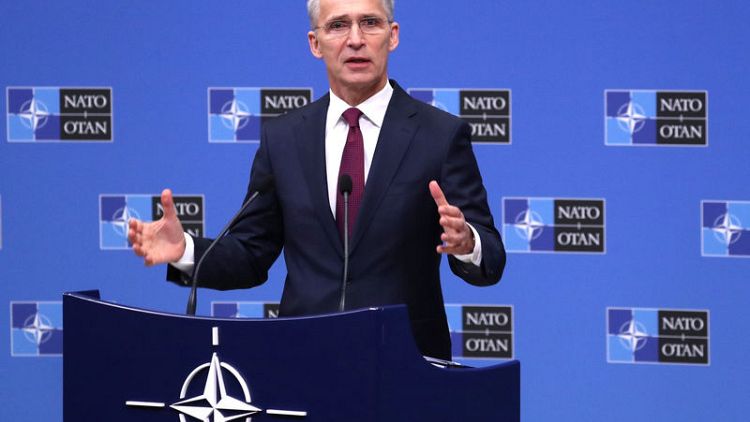By Robin Emmott
BRUSSELS (Reuters) - More European allies in NATO increased defence spending in 2018, with sharp rises in the Baltics, Poland and the Netherlands, but only six governments met a target sought by the United States - while Germany lagged and Canadian outlays fell.
European allies have tried to deflect threats from U.S. President Donald Trump, who last year demanded countries double NATO's defence spending goal of two percent of economic output. They say security is not just about spending targets.
NATO's 2018 annual report showed on Thursday that the U.S.-led alliance moved closer to a pledge to dedicate 2 percent of national economic output on defence every year, with European allies reaching the 1.51 percent level, a five-year high.
"We face a paradox," NATO Secretary-General Jens Stoltenberg told a news conference as the report was released. "At a time when some are questioning the strength of the transatlantic bond, we are actually doing more together ... than ever before."
Trump, as the alliance's de facto leader, has made defence spending a priority after years of defence cuts following the 1945-90 Cold War. He has questioned NATO's value to Washington.
While spending in Bulgaria, the Baltics and the Netherlands jumped some 20 percent in 2018 compared to 2017, only Estonia, Greece, Poland, Latvia, Lithuania and Britain met the 2 percent goal last year, although Riga and Vilnius joined the group. Romania is also close to reaching to target.
But spending in Canada fell by almost 11 percent last year.
COSTLY CRISES
European governments have been pushed into more funding for militaries by Russia's 2014 annexation of Crimea, failing states on NATO's outer borders, Islamist militancy and Trump's demands that allies take a bigger share of the cost of defending Europe.
But growing economies have made meeting the 2 percent target, and mollifying Trump, more challenging.
While Germany invested around 1.5 billion euros ($1.70 billion) more on defence in 2018, its spending as a percentage of gross domestic output (GDP), was stable at 1.23.
That puts Germany, Europe's biggest economy, at the lower end of the NATO league table, well below the United States at 3.39. Belgium and Spain remain at below 1 percent of GDP while Italy's spending failed to rise as a percentage of the economy.
Stoltenberg, a former Norwegian prime minister, defended Berlin, saying he had assurances that Germany would raise its defence outlays by 80 percent between 2014 and 2024.
Overall, NATO countries spent almost a trillion dollars on defence in 2018, according to the report, with just under 70 percent of that made up by the United States, although not all Washington's spending goes towards defending European soil.
Stoltenberg, who is to address the U.S. Congress in April, said there is still a significant shift in spending underway as the alliance seeks to deter Russia and undergoes its biggest modernisation in decades.
Between 2016 and 2020, NATO Europe, including Turkey, and Canada, are expected to increase defence spending by a cumulative $100 billion, the Western alliance says.
(Reporting by Robin Emmott; Editing by Mark Heinrich)
